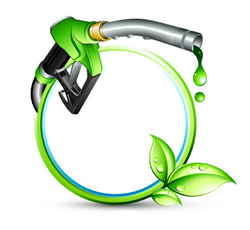Ecology and Environment
ECOLOGICAL CARS, ecology savings and convenience of LPG and CNG
 We are all aware of the problem of air pollution due to the effects it can have on our health and the consequences it may have on the way we organize our lives to face them.
We are all aware of the problem of air pollution due to the effects it can have on our health and the consequences it may have on the way we organize our lives to face them.
From the ecological perspective, LPG and Methane have many aspects in their favor. Thanks to a constant technological innovation, it has achieved very significant results.
LPG and CNG are ECOFRIENDLY fuels, with fewer pollutant emissions such as carbon monoxide, unburned hydrocarbons, sulfur dioxide, particulates and volatile organic compounds;
Greenhouse gas such as:
· Benzene;
· PAH (Polycyclic Aromatic Hydrocarbons);
There is absolutely no LEAD.
There is almost no SULFUR.
PARTICULATES deserve significant mention: the level of the famous fine powder particulates PM10 and PM2.3 (that often lead to restricting urban traffic) in the LPG and CNG are considered practically absent.
Convert your car to gas
Convert your car to gas: it is the most ecological and economical alternative.
Installing a LPG or methane gas device in your car significantly reduces fuel costs.
There are big savings compared to gasoline:
with LPG 50-60%
with CNG 60-70% equivalent of km traveled.
More details on LPG
 By its nature, LPG has antiknock characteristics (high amount of octane) and needs no lead or other carcinogenic additives such as gasoline.
By its nature, LPG has antiknock characteristics (high amount of octane) and needs no lead or other carcinogenic additives such as gasoline.
The emissions of a car using LPG have no heavy particulates, benzene, sulfur and aldehydes, which are strongly carcinogenic and are present in ordinary fuels. LPG is only minimally responsible for the formation of city smog, which is caused primarily by fine powder particulates (PM) and by gaseous emissions of nitrogen oxides (NOx).
These substances are in fact present in extremely lower concentrations in the emissions of cars using LPG compared to those of vehicles using diesel and gasoline. LPG does not contribute to photochemical smog, which responsible for the high summer pollution in our cities. The molecules of propane, a main component of the LPG, are very stable and thus not reactive in the presence of sunlight.
The LPG is a mixture of butane and propane gas produced from the refinement of petroleum. Its production does not generate industrial pollution and has a double environmental advantage: the LPG not recovered for use would be uselessly burned overhead in wells or in the refinery.
Now Italy has also adopted the European rules that regulate the maximum levels of pollutant emissions of all motor vehicles. Already for some time, all of the builders of GLP equipment have adapted their systems to meet the Euro 3 parameters (in effect since January 1, 2001). Furthermore, the new systems for converting today's gasoline-fueled automobiles into automobiles that respect the ecological criteria of the Euro 4 and Euro 5 approvals must have very restrictive parameters and comply with the EOBD.
In Europe, only the GFI has published the approvals of the LPG sequential injection and phased systems in compliance with new R115 regulations.
Low emissions and big savings

